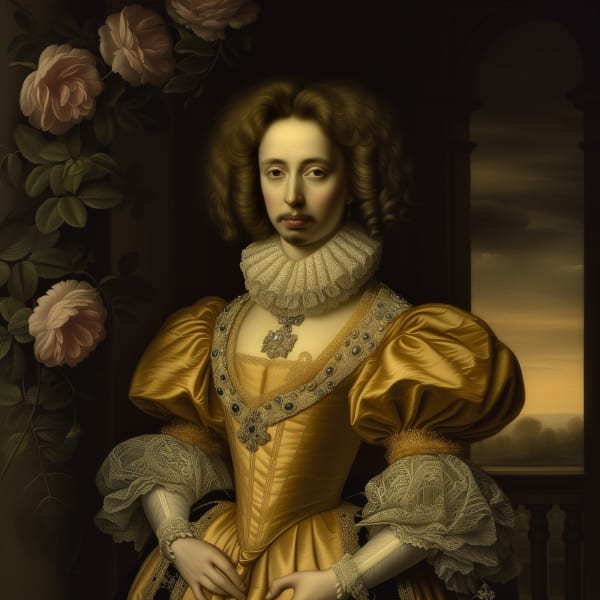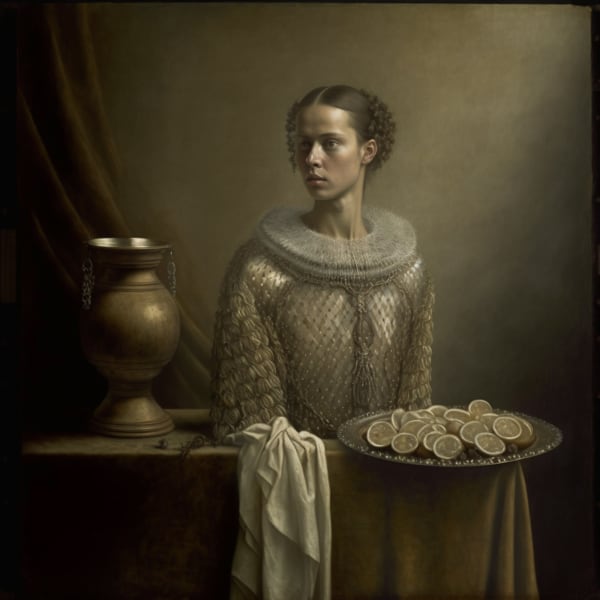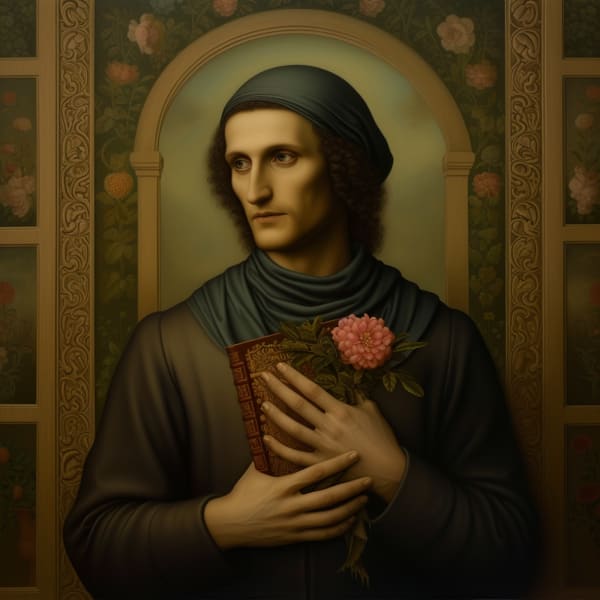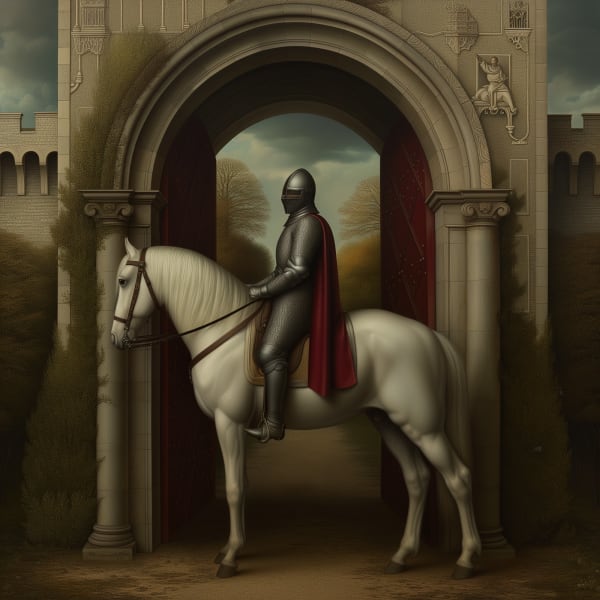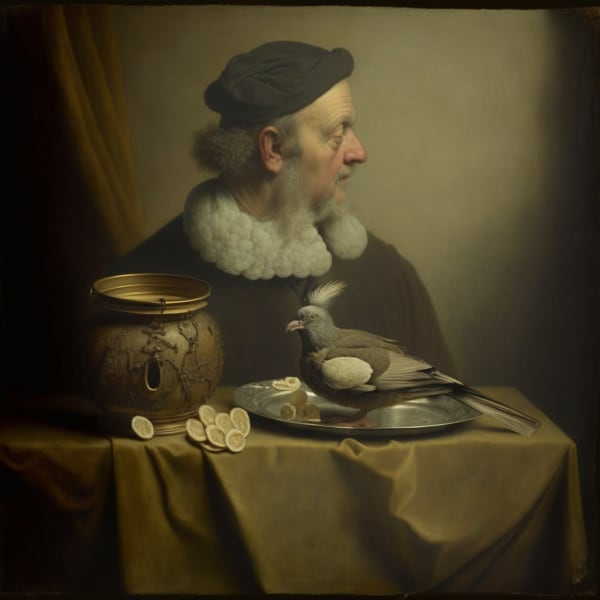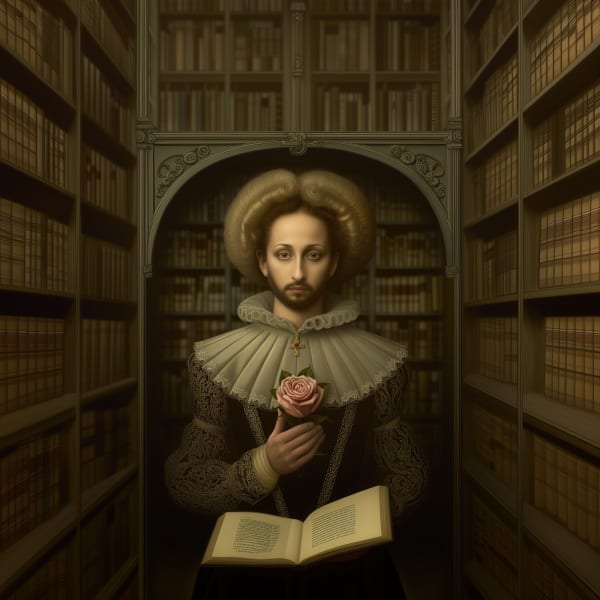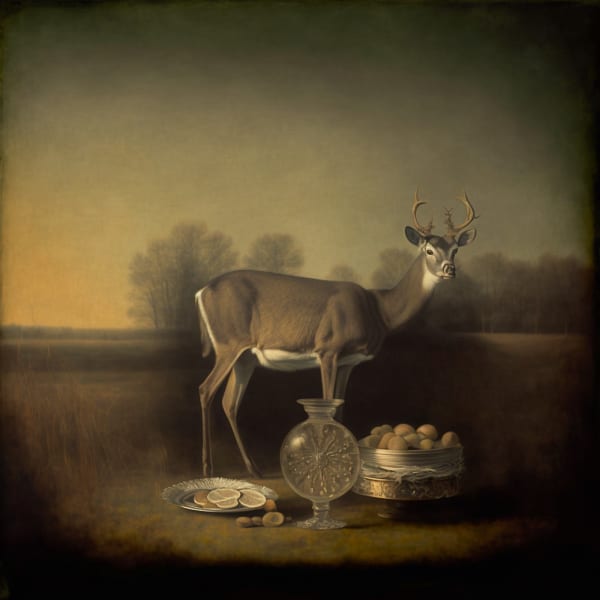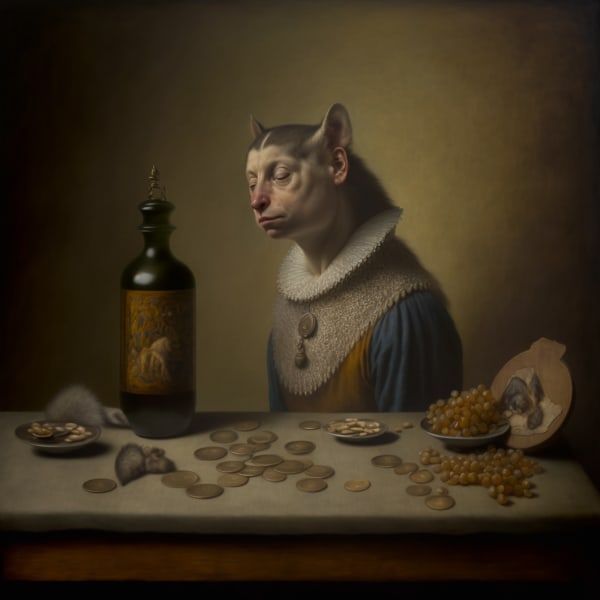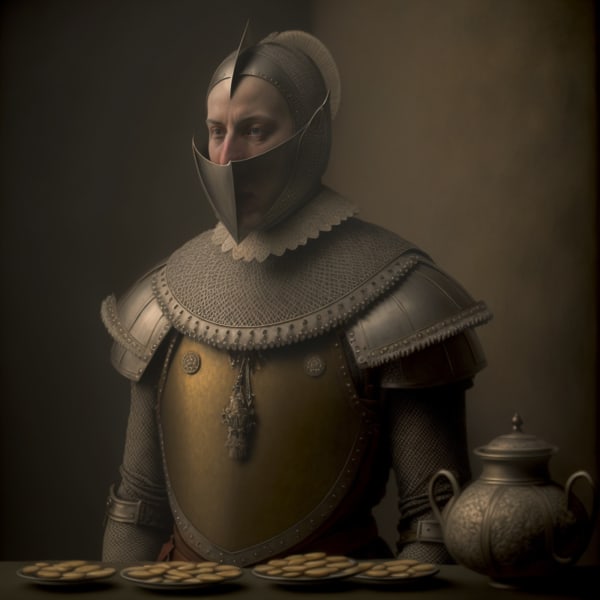Jeremiah Chechik: Primitives
"...In classical times, still lifes evoked the abundant joys of the Good Life, well lived and thoroughly examined on earth. In the age of faith, the table might have obliquely recalled an altar; the vase or bowl, a chalice; the fruits and flowers, the sacred host. Salvation was thus—invisibly—in the picture, an omnipresent implication and promise...Cézanne and the Cubists gave the old format new life as the West became modern, forsaking illusionistic naturalism for self-evident artifice, and trading religious communalism for existential individualism.
And so it goes. . . . Such insights make Chechik’s sur-traditionalism a high-tech, high-concept form or experimentation that can embrace both AI image generation and expert material craftsmanship, while still addressing longstanding—indeed eternal—human concerns."
-Richard Vine
"The period between the 14th and 17th century was a dazzling eruption of technology…The resurgence of oil-based paints became the leading technological edge that opened the door to major innovations of color blending and layered glazing. As the oils dried slowly, mixing the paint on the canvas created brand new aesthetics. With these artists, we see a more nuanced level of realism, enabled in part, by advances in weaving technology which led to the widespread use of canvas.
…The adoption of these new materials along with advances in optics, the skilled Flemish Painters developed their distinctive style exploring perspective in new and exciting ways. This fertile period ushered in great innovations in art, science and technology, leading to new forms of expression and thought - i.e.: the birth of the Renaissance. The Flemish Painters (Primitives) were as much technologists as they were artists.
The collection embraces the influence and aesthetic of those artists. These are created using our modern tools and technologies. AI, digital manipulation, fine color adjustments are integrated with UV printing on canvas. The works are glazed with traditional oils. The intention is to connect the work across time, through technological innovations using traditional and non traditional techniques.
PRIMITIVES draws this connection between disruptive technologies then and now to link the creative impulse across time."
-JC
-
 Jeremiah Chechik, Carel van Mander, 2024
Jeremiah Chechik, Carel van Mander, 2024 -
 Jeremiah Chechik, Carlo di Berardo, 2024
Jeremiah Chechik, Carlo di Berardo, 2024 -
 Jeremiah Chechik, Cleerke, 2024
Jeremiah Chechik, Cleerke, 2024 -
 Jeremiah Chechik, Desiderius Erasmus, 2024
Jeremiah Chechik, Desiderius Erasmus, 2024
-
 Jeremiah Chechik, Gardner, 2024
Jeremiah Chechik, Gardner, 2024 -
 Jeremiah Chechik, Gioffre Borgia, 2024
Jeremiah Chechik, Gioffre Borgia, 2024 -
 Jeremiah Chechik, Knight, 2024
Jeremiah Chechik, Knight, 2024 -
 Jeremiah Chechik, Knight on Horseback, 2024
Jeremiah Chechik, Knight on Horseback, 2024
-
 Jeremiah Chechik, Leo X, 2024
Jeremiah Chechik, Leo X, 2024 -
 Jeremiah Chechik, Lost, 2024
Jeremiah Chechik, Lost, 2024 -
 Jeremiah Chechik, Master Ludic, 2024
Jeremiah Chechik, Master Ludic, 2024 -
 Jeremiah Chechik, Michele di Bruno, 2024
Jeremiah Chechik, Michele di Bruno, 2024
-
 Jeremiah Chechik, Oiseaux, 2024
Jeremiah Chechik, Oiseaux, 2024 -
 Jeremiah Chechik, Polonie, 2024
Jeremiah Chechik, Polonie, 2024 -
 Jeremiah Chechik, Rogier van der Weyden, 2024
Jeremiah Chechik, Rogier van der Weyden, 2024 -
 Jeremiah Chechik, Sadness with Fruit, 2024
Jeremiah Chechik, Sadness with Fruit, 2024


